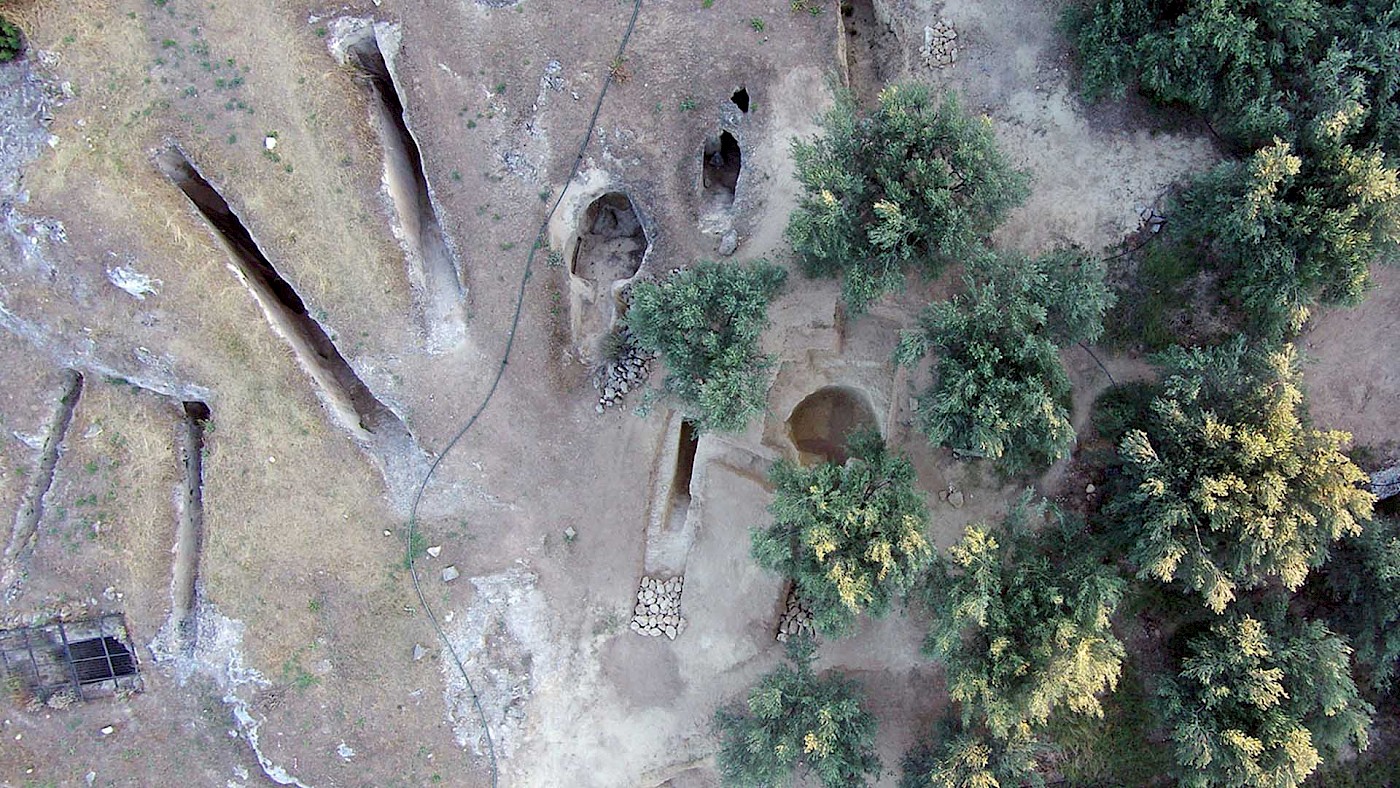Near the modern village of Aidonia, located a little west of Nemea – where Heracles fought a lion – and northwest of Mycenae, lies a cemetery containing chamber tombs dated to the Mycenaean Bronze Age. It lies in the modern territory of Korinthia, the region dominated by the city of Corinth. The site has been in the news the past week because of the discovery of two new and seemingly complete chamber tombs. Among other news outlets, the New York Times has reported the discovery yesterday.
We don’t normally comment on news, except if there’s a good reason, as with the Combat Agate from Pylos (one of our most popular articles, by the way). In this case, I was invited to talk live on the Dutch national radio for a few minutes about these recent discoveries, and I figured readers of Ancient World Magazine who are not proficient in Dutch might like to read about it. If you understand Dutch, you can listen to the interview here; my talk starts around 23:22 in the bit that was broadcast today between 16:00 and 17:00 o’clock. You can also listen to just the relevant segment here.
Tombs at Aidonia
The cemetery at Aidonia was first investigated by archaeologists in 1978. Two intact chamber tombs of the Mycenaean period were unearthed here, but the rest had all been emptied out by looters, perhaps in the winter of 1976-1977, a short time before archaeologists started digging here. Chamber tombs are a typical feature of the Mycenaean Bronze Age (ca. 1700/1600 to 1100 BC) in the Argolid and surrounding territories. They are cut into the rock and consist of a central grave (the chamber), with a narrow opening that is normally sealed off; the tomb is accessed via a passageway or dromos.
These chamber tombs almost (!) invariably contain inhumations rather than cremations; cremation doesn’t become common until the Iron Age (after ca. 1050 BC). They generally contain multiple burials; often, earlier remains are collected and redeposited in the grave. This also seems to be the case with the two new chamber tombs discovered at Aidonia. One of them is said to contain two “full burials” and the bones of 14 other individuals. Most likely, the individuals buried in the tomb were members of the same family or kinship group. The other tomb, of which the roof appears to have collapsed, featured three burials.
The newly discovered chamber tombs contained fine pottery, including a number of so-called stirrup jars (typical for the period), as well as different smaller objects, including some figurines. However, all of the photos released to date only showcase the pottery, but they have been preserved remarkably well. The pottery is fine tableware and can be associated with alcohol (wine) consumption. Interestingly, Greek Reporter notes that the finds from the new tombs, dated ca. 1400-1200 BC, are not as rich as those from burials at Aidonia that dated to ca. 1600-1400 BC. The settlement that must have existed near the cemetery hasn’t been located yet, as far as I know.
Aidonia is one of many sites that existed in the territory that must have been in the sphere of influence of Mycenae. Mycenae was the site of an important Late Bronze Age citadel, so large and important that the entire Late Bronze Age civilization was named after it. Famously excavated by the German adventurer and entrepreneur Heinrich Schliemann in the late nineteenth century, Mycenae consisted at its zenith, in the thirteenth century BC (Late Helladic IIIB), of a heavily fortified citadel with a central palace, grave circles, and a monumental entrance gate, the so-called Lion Gate. One of the questions that researchers seek to answer is how Mycenae interacted with settlements elsewhere in its territory; were these simple core-periphery interactions or was the relationship more complex?
Incidentally, this isn’t the first time that new tombs have been discovered at Aidonia that have seemingly escaped the attention of looters. Last year, a large vaulted tomb with a more or less circular burial chamber was discovered that contained lots of pottery and some metal objects, jewellery, and seal stones. There have been sporadic investigations at Aidonia over the years, to judge from the surveys published in Archaeological Reports, and larger-scale excavations were resumed in 2016. However, some looting has continued at the site. Still, it’s to be hoped that more discoveries are forthcoming.
Aidonia was also in the news in 1993, when New York’s Michael Ward Gallery was offered a collection of Mycenaean gold jewellery and seal stones, with a value of US $1.5 million. The Greek Ministry of Culture determined that the objects had been stolen, presumably from Aidonia, as determined by stylistic analysis. (But note the discussion in Christopher Chippindale and David Gill, “Material consequences of contemporary classical collecting”, American Journal of Archaeology 104.3 (2000), pp. 485-486.) The Ministry sued, and the case was settled later in 1993 and the objects were returned to Greece.
Thanks to Laurens Gaukema for inviting me to talk about the discoveries at Aidonia. Thanks also go to host Lara Rense of NPO Radio 1.
